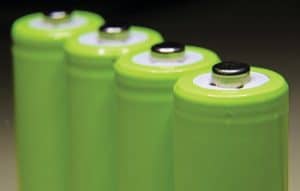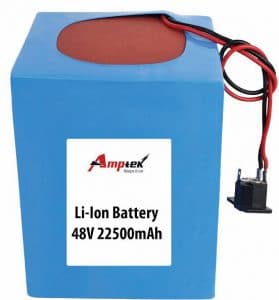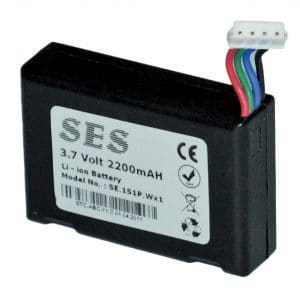 When it comes to dependable performance, lithium-ion batteries offer low risk and long lasting solutions. For over three-and-a-half decades they have been used in a long list of real-world applications that demand safety and reliability.
When it comes to dependable performance, lithium-ion batteries offer low risk and long lasting solutions. For over three-and-a-half decades they have been used in a long list of real-world applications that demand safety and reliability.
By Shruti Mishra
The limited availability of non-renewable energy resources and the high carbon dioxide emissions from vehicles have forced the global automotive industry to look for sustainable mobility solutions. And the invention of electrical drive technology is a result of that hunt. One prime segment that directly benefits from the rapid adoption of electrical vehicles is lithium-ion batteries. In recent times, with the surge in demand for electric vehicles, the relevance of lithium-ion batteries as a source of power has also increased manifold.
Lithium-ion batteries have attracted worldwide attention as they have the potential to power the vehicles of the future. Due to their compact size, light weight and high efficiency, these batteries have quickly replaced the nickel-metal hydride batteries that were being used in electric vehicles so far.
What’s more, industries like telecom, medical and consumer electronics are also moving towards lithium-ion batteries. These are ideal for heavy duty applications because they are immune to high temperature risks, vibration and power fluctuations. More importantly, unlike the conventional lead-acid batteries, lithium-ion batteries are much more efficient and show zero sulfation. The only downside of using lithium-ion batteries is that they are more expensive.
Why pick lithium-ion batteries?
- Highest energy density compared to any other rechargeable battery chemistry
- Great cycle life
- Lightweight
- Increased shelf life
- Customisable
- High charging capabilities
- Boosts a product’s life and functionality
Types of lithium-ion battery configurations
Manufacturers are developing an extensive portfolio of lithium-ion battery designs to cater to the unique needs of each customer. The three primary lithium-ion battery configurations are listed below.
Cylindrical cells: This is the most basic and widely used lithium-ion cell shape. Ease of manufacturing and good mechanical stability is the main advantage of this cell format. This design is enclosed within a sealed can, which can withstand high internal pressure. It is also equipped with a re-sealable vent that releases pressure during excessive charge. Cylindrical cells are mostly used in applications that do not demand an ultra compact battery, like biomedical instruments and power tools.
Prismatic batteries: These come in a more robust and economical shape. Commonly known as a battery pack, this configuration holds a large number of cylindrical lithium-ion cells as a single structure. In this configuration, lithium-ion cell units are arranged in series or in parallel, depending on the required voltage and current. One can customise the battery pack’s size and dimensions as per individual capacity requirements.
To avoid damaging the cells, lithium-ion battery packs are hard-shelled with a strong casing. Besides consumer electronics, these battery packs are also used in wind storage, solar portables, electric vehicles, and medical equipment because of their high energy capabilities. One of the greatest advantages of this format is that it allows flexible designs and improves space utilisation.
The pouch battery: This is a comparatively new design, which is packaged using conductive multi-layer foils and does not have a rigid container. The pouch battery design is simpler than the cylindrical cell and more flexible than the prismatic battery. Unlike the above two, this battery design eliminates metal enclosures and is just shrink-wrapped. When exposed to high humidity levels and excess heat, the service life of this battery gets reduced.
Because of its light weight and flexibility, pouch battery designs are mostly used in applications that require ultra-thin enclosures, like smartphones, tablets, military appliances, etc.
The market scenario
The experts foresee that the Indian market for lithium-ion batteries could experience a boom across all sectors—consumer electronics, electric vehicles (EVs), and the newest market segment, energy storage.
According to a Research and Markets report titled ‘India’s lithium-ion battery market 2011-2021’, this market is projected to grow at a CAGR of over 32 per cent between 2016 and 2021. The increasing demand for personal mobility, the adoption of portable healthcare devices, and the focus on renewable and grid energy applications are all helping the lithium-ion market to expand in India. Besides this, stringent regulations by the government to curb the country’s carbon emissions and growing consumer interest in electric vehicles will further improve the business landscape.
Government initiatives
Ever since vehicular pollution levels in India came under the judicial scanner, the government of India has taken various measures to promote electric cars. In order to achieve its goal of making India a 100 per cent electric vehicle nation, the government has asked the Indian Space Research Organisation (ISRO) to share its technology for manufacturing lithium-ion batteries with the private sector, to enable its use in electric vehicles. This move will not only give a major boost to the new technology but also slash the cost of lithium-ion batteries, which, in turn, can lower the final cost of the EV itself.
Also, the recent collaboration between Japanese giants – Suzuki Motor Corporation, Toshiba Corporation and Denso Corporation—to start a lithium-ion battery pack joint venture in India, has bolstered the ‘Make in India’ initiative. This tie-up will spur the indigenous manufacture of lithium-ion batteries that will automatically bring down costs and, hence, increase the sales of electric vehicles in the country.
Latest products in the market
Model: SB2S2P-97, Manufacturer: Sealed Energy Systems
 Key features
Key features
- Capacity: 5200mAh
- Nominal voltage: 7.2V
- Maximum constant current: 6A
- Pack type: Soft
- Dimensions (L x W x H): 72mm x 22mm x 67mm
- Weight: 0.22kg
USP: This soft cased battery is highly efficient and durable. It is suitable for portable electronics
Contact: www.sesbatteries.com
Model: Deep cycle lithium-ion battery pack, Manufacturer: Fusion Power Systems
 Key features
Key features
- Dimensions (L x W x H): 15cm x 15cm x 20cm
- Nominal voltage: 48V
- Nominal capacity: 22.5Ah
- Operation voltage range: 36V to 54.6V
- Operating temperature: -20°C to 65°C
- Efficiency: 99.1 per cent
- Weight: 6.7kg
USP: The battery is capable of recharging over 1500 cycles and provides 100 per cent depth of discharge (DOD). It is ideal for deep cycle applications.
Contact: www.amptekindia.in
Model: SE1S1P, Manufacturer: Sealed Energy Systems
 Key features
Key features
- Nominal voltage: 3.7V
- Capacity: 2200mAh
- Maximum current: 2A
- Pack type: Soft
- Dimension (L x W x H): 18mm x 18mm x 67mm
- Weight: 49gm
USP: Good safety, no memory effect, lightweight and environment-friendly
Contact: www.sesbatteries.com



























